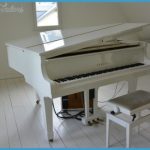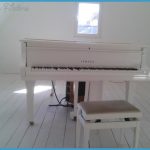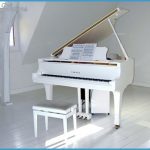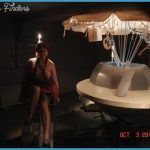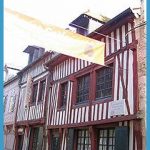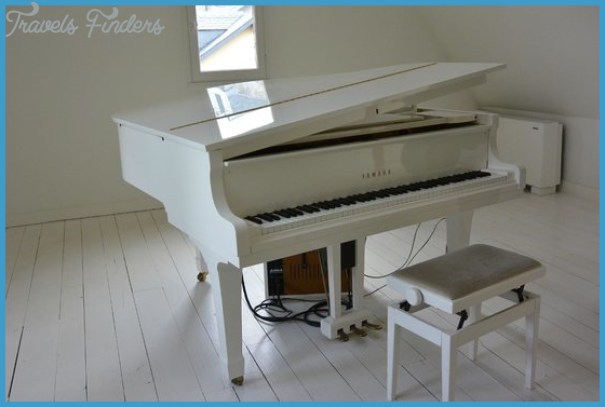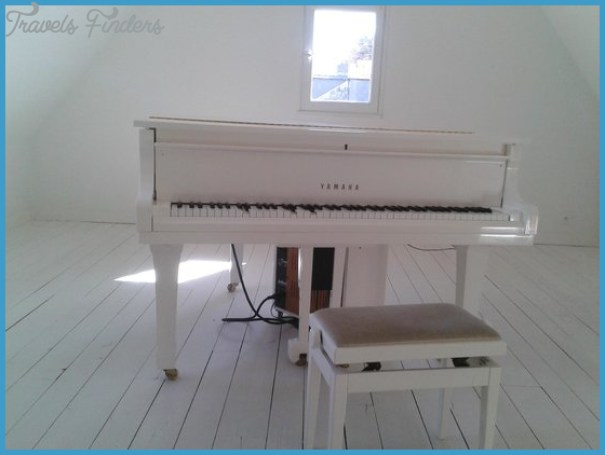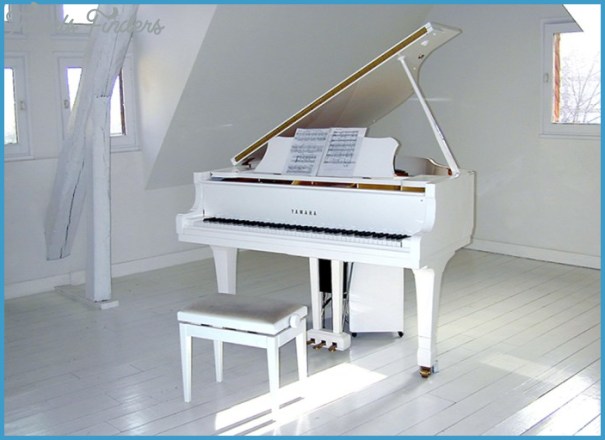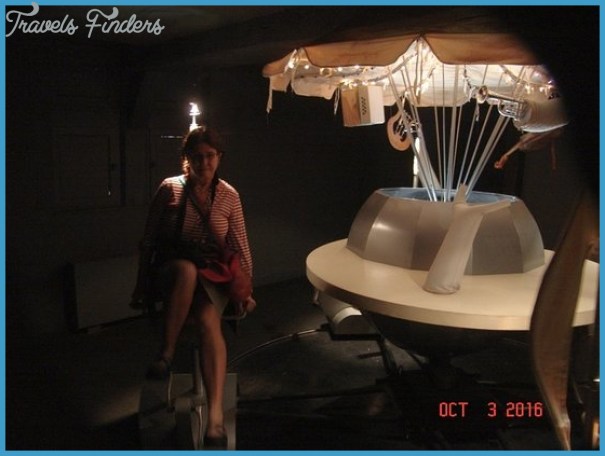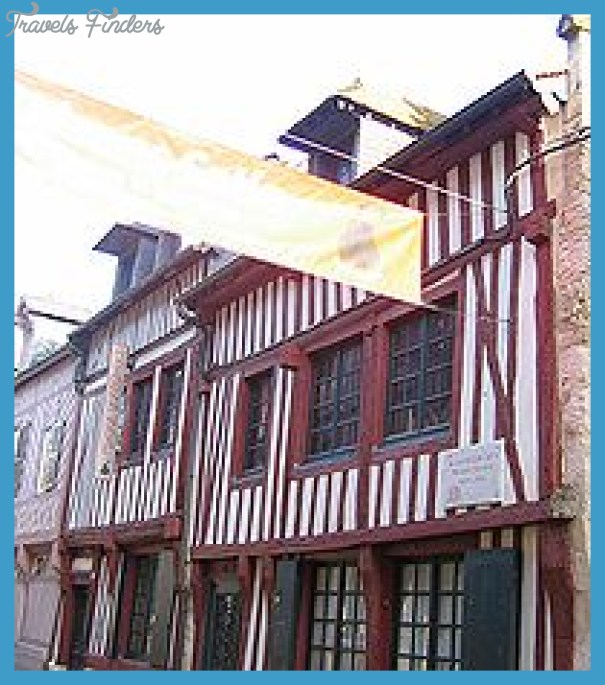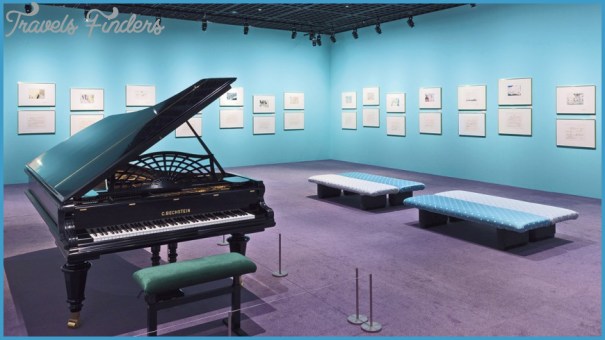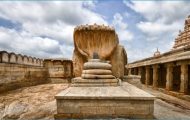SATIE MUSEUM
Erik Satie began life in the Normandy fishing port of Honfleur. His parents lived near the esplanade at 90 rue Haute, where he was born on 17 May 1866, and his grandparents were at no.50. His father Alfred, a composer of music-hall songs, decided to set up as a music publisher in Paris and the family moved there in 1870. But two years later Erik’s mother died and he was sent back to Honfleur to live with his grandparents. There, under their influence, he took up the piano. Today Honfleur, with its many half-timbered buildings lining the narrow streets and its characterful harbour life, is a thriving holiday resort, reached from the east by the striking new Pont de Normandie. The house at no.90 Rue Haute and its neighbour, no.92, were acquired for the Association Satie Honfleur, renovated, interconnected and, in 1998, christened Maisons Satie’: perhaps more installation than museum, in tune with the composer in concept and its drollery, and up-to-date in its realization. The proprietors themselves decree amusez-vous’, guaranteeing visitors a zany mixture of music and what they dub charcuterie’. The journey through eight rooms, aided by Satie’s (often apparently posthumous) recollections and a series of arrows emanating from pears to point the way -a logo en forme de poire – begins with the donning of headsets whose music and commentary (in French or English) are activated by a series of sensors along the route. The sound effects (musical excerpts, monologues and dialogues), together with theatrical decor and lighting effects in each room, draw visitors into Satie’s eccentric world. There is plenty to do along the way: don’t miss the carousel of instruments injouables [unplayable]’ or the cabaret-cinema.
SATIE MUSEUM Photo Gallery
Maisons Satie Honfleur Complaisamment solitaire’: display at the Maisons Satie Satie returned to Paris for good in 1878, living with his father, and later his stepmother, first at 2 Rue Constantinople (just north of Gare St Lazare) and then at 50 Rue Condorcet (near the Cirque Medrano) until 1887, when, after a chequered career as a student at the Conservatoire and a brief and undistinguished stint in the army, he was obliged to move out because of a liaison with the family maid. He was drawn to the exotic, bohemian life of nearby Montmartre and found work as a pianist at the cabaret Chat Noir, at 12 Rue de Laval (later Rue Victor Masse) – which no longer exists, although a plaque marks the spot. By the beginning of 1890 Satie was living in a miserable, tiny, windowless room, more closet than cabinet, at the top of the butte at 6 Rue Cortot, not far from Sacre-Coeur. Soon after, he met Josephin Peladan, Sar of the Rosicrucian Order, the Temple and the Grail, and was appointed chapelmaster’ for the sect.
During his eight years at 6 Rue Cortot he composed Rosicrucian music as well as piano music; left the Chat Noir for its chief rival, the Auberge du Clous at 30 Avenue Trudaine (which still exists); embarked on a literary career; founded his own Eglise Metropolitaine d’Art de Jesus Conducteur (of which he was the solitary member); enjoyed a short affair with the painter Suzanne Valadon (January to June 1893); and applied three times without success for admission to the Academie des Beaux-Arts (chronicled in his 1912 Memoires d’un Amnesiac’). The building at 6 Rue Cortot still exists. From 1984 to 1999 a small flat on the second floor, though possibly not his original room, was used by the Fondation Erik Satie for the display of their substantial archive: manuscripts, ephemera, photographs, oil portraits by Grass-Mick and La Rochefoucauld, and personal effects (collar, hat and cane). They were then consolidated with the display at Honfleur. In 1898 Satie moved to the southern working-class suburb of Arcueil-Cachan, while maintaining his former lifestyle. Almost unbelievably, he made the 19-kilometre trip daily, on foot, from his room over a dingy cafe, in a flat-iron building at 22 Rue Cauchy, known as the Maison aux quatre cheminees’, to the cabarets of Montmartre, returning home in the early hours, armed with a hammer for protection. Les quatre cheminees’ still stands, still in one of the grubbier parts of the city; a plaque was erected on the building in 1929, four years after his death, a nearby park was named after him on the centenary of his birth, and another plaque was put up in 1998 to mark the centenary of his moving in: Avec emotion, Arcueil s’en souvient’. He never allowed anyone into his room (no. 15 on the second floor); those who ventured in after his death found a time-capsule of his life – he had lived in squalor, without running water or gas lighting; there were piles of unopened mail, worn-out, moth-eaten suits, 60 pairs of down-at-heel shoes, and several thousand small pieces of paper carefully decorated with his inimitable drawings and calligraphy in black and red India ink, filed in innumerable cigar boxes. It is re-created without apology at the Honfleur Maisons Satie’. Satie died of cirrhosis of the liver in a Paris hospital on 1 July 1925. He was buried in the cemetery at Arcueil.

